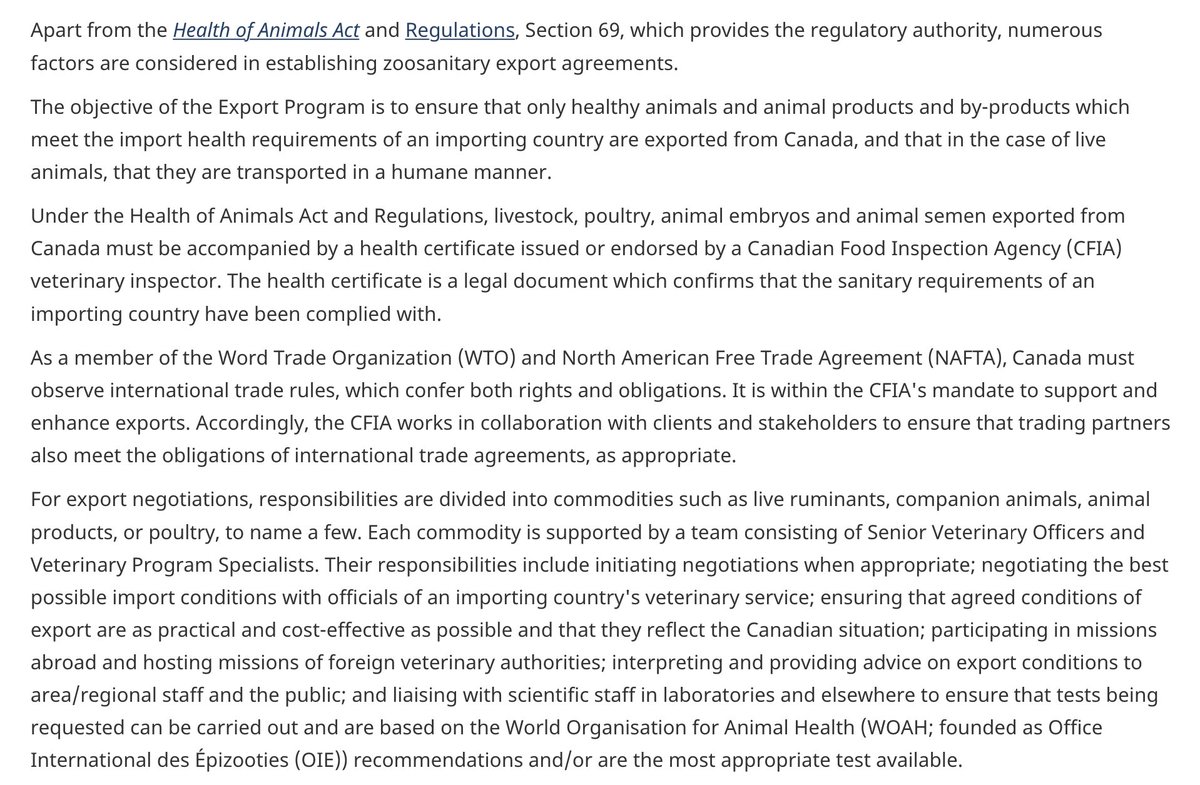
Virologist working at but not speaking for @USask. Co-EIC @Els_Vaccine. Jeopardy! loser. "Disreputable vaccine cheerleader." 🇺🇸in🇨🇦. Opinions mine. she/her
69 subscribers
How to get URL link on X (Twitter) App


 5 months ago I was scrolling & came across some tweets from @sisuvanhell that was my first exposure to the far-right extremist ostrich convoyers. They accused CFIA of sending "murder drones" to covertly cull their flock of ostriches after a H5N1 outbreak
5 months ago I was scrolling & came across some tweets from @sisuvanhell that was my first exposure to the far-right extremist ostrich convoyers. They accused CFIA of sending "murder drones" to covertly cull their flock of ostriches after a H5N1 outbreak 


https://twitter.com/goatkennypowers/status/1972580674373870012The ostrich farm claims they are a scientific research facility to study ostrich antibodies. Birds have antibodies in their egg yolks & ostrich eggs are huge, so you can get a lot of antibodies from them. The farmers implied they were studying antibodies to COVID & flu.

https://twitter.com/globeandmail/status/1971901670876655671The thing people need to realize is that, although the ostriches were infected 10 mo ago, they still pose a health risk & a HUGE economic risk. If CFIA spares them, Canada will violate trade agreements, jeopardizing the entire $2B poultry export market.
https://x.com/angie_rasmussen/status/1971288012983238898

https://twitter.com/thevivafrei/status/19712189078526198161. You can test these ostriches for antibodies. To do it reliably you need to do either a microneutralization or a hemagglutinin inhibition (HAI) assay. These require a high containment lab & trained personnel with HPTA security clearance because they use live virus.


https://twitter.com/angie_rasmussen/status/1890380082218205254

 Here’s a link to the entire odious piece. It reads like it was ghostwritten by Alina Chan:
Here’s a link to the entire odious piece. It reads like it was ghostwritten by Alina Chan:
https://twitter.com/sisuvanhell/status/1922380138953486589When I came across this bright idea that these ostriches are somehow now H5N1 cure factories. I blame the movie Outbreak for giving people the idea that you can cure highly pathogenic viruses with serum or whatever. But H5N1 pathogenicity exists across a range of severity.
https://twitter.com/sisuvanhell/status/1922387708711780650

 I do kind of love the idea that Trump’s path to dictatorship includes a proclamation on his political position on mouse adaptation, unregulated DNA synthesis, & whatever else is deemed subjectively dangerous by authors who obviously know fuck all about it.
I do kind of love the idea that Trump’s path to dictatorship includes a proclamation on his political position on mouse adaptation, unregulated DNA synthesis, & whatever else is deemed subjectively dangerous by authors who obviously know fuck all about it.
 Can't complain about half a billion for a "next-generation universal vaccine platform"! What is this amazingly innovative new vaccine technology? Tell me more, because this says "BPL-inactivated, whole virus platform". That describes current flu vaccines.
Can't complain about half a billion for a "next-generation universal vaccine platform"! What is this amazingly innovative new vaccine technology? Tell me more, because this says "BPL-inactivated, whole virus platform". That describes current flu vaccines.
 FYI to the NIH Director: having your paper rejected because peer reviewers found it lacked scientific merit is not censorship or gatekeeping. It means your work didn’t pass muster & wasn’t up to scientific standards. Expert peer review is what distinguishes a journal from a blog.
FYI to the NIH Director: having your paper rejected because peer reviewers found it lacked scientific merit is not censorship or gatekeeping. It means your work didn’t pass muster & wasn’t up to scientific standards. Expert peer review is what distinguishes a journal from a blog. 
https://twitter.com/angie_rasmussen/status/1914104802260422874The clade 2.3.4.4.b viruses circulating in the US have infected many different mammalian species. In the course of this, we are seeing many opportunities for these viruses to adapt to mammalian hosts, including switching receptor usage & increasing virus fitness.

https://twitter.com/alexander_tin/status/1907756947182395465Like her fellow contrarians in the HHS conman clown car, she’s been persecuted & censored by the public health industrial complex for her dissenting views.
https://twitter.com/angie_rasmussen/status/1716442466704851053

 Here’s a list of all the funded research with links to NIH Reporter so you can dig through all the info about what your tax dollars have funded.
Here’s a list of all the funded research with links to NIH Reporter so you can dig through all the info about what your tax dollars have funded.
 Basically this is the plan:
Basically this is the plan:

https://twitter.com/nature/status/1897548872689262627
 There’s a longer list of things he would not commit to, including:
There’s a longer list of things he would not commit to, including:
https://twitter.com/politico/status/1897222644488888378He first rose to national prominence with the Santa Clara study—a terribly executed serology study that couldn’t be validated & concluded the CFR of COVID-19 was much lower than it actually was.
https://twitter.com/covid19_disease/status/1894924526150119625Flu is a segmented, negative sense RNA virus. This means its genome is divided into 8 pieces and they are negative coding sense and serve as a template for transcribing (copying) mRNA from each segment.